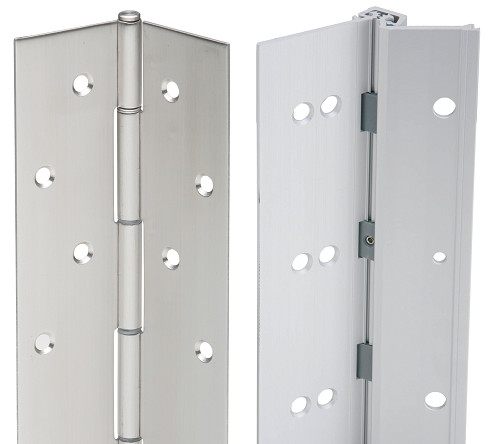Today we are going to answer the question: Why Is My Door Not Latching? Or Why is my door not closing? We’ll also talk about solutions that can help your door latch. At Loc-Doc Security, Our Mission is to help you protect your people and your property.
Many customers of ours contact us throughout the year when their door is not latching or closing. First let’s dive into what latching means? Latching is when the mechanism inside the door (the latch) positively engages inside the door frame.

Why would someone’s door not latch? Here are 2 reasons why your door isn’t latching.
Your Door Has Swelled: Temperature Changes can affect your doors. Yesterday, your door was shutting like usual. But why is it not closing today? This happens frequently in the South with the heat and humidity that is prevalent almost year round. This is especially pronounced in wood doors that are not sealed or varnished around the exterior. Moisture from the humidity can be absorbed around the edges causing the door to swell. This is usually not found in metal doors as often. Metal doors can be affected by extremely high heat, but are very durable with weather changes.
Wear and Tear: Doors with pivots or hinges can deteriorate and start to sag. The reason for the sagging is loose or bent hinges. This happens when the door is opened and closed thousands of times a week. Frequent use will cause the screws to loosen or even warp the hinges. This can cause the door to not align properly and prevent it from latching shut.
What is a Commercial Door Hinge? What is a Continuous Hinge? What is a Piano Hinge?
The following is an excerpt from an Assa Abloy blog about Commercial Door Hinges and they do a great job of explaining their usefulness and application.
According to one of our partners, Assa Abloy, Commercial door hinges are thicker gauge, load-bearing hardware that lasts for years.
Ranging in size and configuration, a typical size for a commercial butt hinge is 4 ½” by 4 ½” with a ⅛” thickness and 1⁄2” diameter. The corners are typically square. They are larger than average hinges because they must handle more wear and tear over a longer period of time and perform under weight, stress and surrounding environment. This heavy duty hardware comes in a variety of finishes, but stainless steel is considered a superior material.
Ball-bearing hinges are one of the most common types found in commercial use. These hinges prevent some of the heavy door problems that occur with long-term use in offices, hospitals, and industrial buildings. These lubricated bearings allow for smooth and silent operation with long-lasting and reliable operation for heavy, wide doors or exterior doors.
A typical door hinge has two leaves that are joined by a single pin, which can be removed. The pin is the pivotal point, allowing the leaves to rotate around the pin as the door closes and opens. While this is a typical design, they can be made to handle various loads for various applications, which often involves additional thickness, more screw holes, more springs and different hinge configurations.
What is a Piano Hinge? What is a Continuous Hinge?

Also called a continuous hinge, a piano hinge runs the full length of the door. They are available in different thicknesses, widths, finishes, and customized designs depending on the length of the door and application. They are best used for industrial applications where the door may face frequent and intense use. The original purpose of this hinge was for attaching piano lids so they were able to fold down.
Piano hinges are also used for shed and barn doors, as well as fire doors, marine doors, prison cell doors, and heavy-duty gates. The type of piano hinge changes based on the door weight and width as well if it’s a wall, post-frame, revolving door, or other type of heavy-duty door.
Why Use a Continuous Hinge?

Continuous hinges are great for high traffic areas. Often found on entrance doors for hospitals, businesses or commercial buildings. They are the same height of the door which distributes the weight evenly on the frame and reduces stress on the hinge. Because of this length and sturdiness, they are able to support heavier doors and can last longer than standard hinges.

What Are Signs That Your Door Isn’t Latching.
Contact With The Frame: If you notice missing paint or varnish on your door this is a big sign that you have an issue with your door latching. Look at the top of the door to see if there are rub marks.
Uneven Gaps: Looking at the door from the outside, if you notice gaps on the hinge side that are uneven (more gap at the top than at the bottom) this is a sign that your door has shifted and could be affecting latching.
Unusual Swelling: While not noticeable in the winter, pay attention when spring starts. If your door suddenly stops working, it could be from an extremely hot or humid day.
If you have questions about continuous hinges or why your door isn’t latching, we can help! Schedule a free evaluation with our team at locdoc.net/sales and pick a time that works for you!

Comments